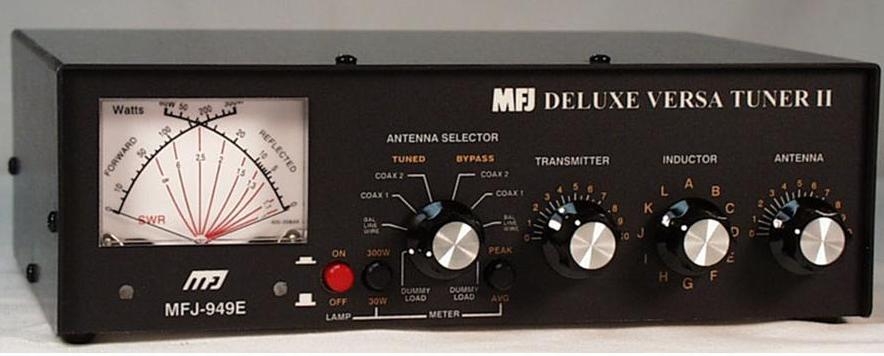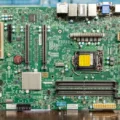HF antenna tuners are an essential component of any ham radio station. They allow for the maximum amount of power to be transferred from the transmitter to the antenna, which is a critical aspect of effective communication. In this article, we will discuss the basics of HF antenna tuners, their importance, and some of the best options available on the market.
The primary function of an HF antenna tuner is to match the impedance of the transmitter to the impedance of the antenna. Impedance is the measure of resistance to the flow of electrical current. The transmitter has a specific output impedance, usually 50 ohms, while the antenna’s impedance can vary depending on its design, length, and surrounding environment. An antenna tuner serves as an intermediary device between the transmitter and antenna, adjusting the impedance to maximize the amount of power transfer.
One of the essential benefits of using an HF antenna tuner is the ability to reduce the standing wave ratio (SWR). SWR is a measure of how effectively the antenna is transmitting energy from the transmitter. High SWR means that there is a mismatch between the transmitter and antenna, leading to the loss of power and potential damage to the equipment. By using an HF antenna tuner, the SWR is reduced, and the power is transferred more efficiently.
There are two types of antenna tuners: manual and automatic. Manual HF antenna tuners require the user to adjust the tuning knobs manually until the SWR is minimized. Automatic HF antenna tuners use microprocessors to adjust the impedance automatically. Both manual and automatic tuners have their pros and cons, and the choice depends on the user’s preference, budget, and station requirements.
Now, let’s take a look at some of the best HF antenna tuners available on the market.
MFJ-941E HF Antenna Tuner: This manual tuner is excellent for both beginners and experienced users. It can handle up to 300 watts of power and has a built-in 4:1 balun. The tuner is easy to use, with a large tuning knob and a clear meter display.
MFJ-945E Mobile Manual Antenna Tuner: This is a compact and portable manual tuner that is perfect for mobile stations. It can handle up to 300 watts of power and has a built-in SWR meter. The tuner can be mounted on a vehicle or used as a standalone device.
LDG Electronics IT-100 Automatic Antenna Tuner: This automatic tuner is suitable for those looking for a high-end option. It can handle up to 125 watts of power and has a fast tuning speed. The tuner is compatible with most transceivers and has a compact design.
ICOM AH-4 Antenna Tuner: This automatic tuner is compatible with ICOM transceivers and can handle up to 120 watts of power. It has a fast tuning speed and can be used with a wide range of antennas.
ICOM AT-140 Automatic SSB Antenna Tuner: This automatic tuner is an excellent option for ICOM transceivers. It can handle up to 150 watts of power and has a fast tuning speed. The tuner is compatible with a wide range of antennas and has a compact design.
HF antenna tuners are a critical component of any ham radio station. They allow for the maximum amount of power to be transferred from the transmitter to the antenna, reducing the standing wave ratio and improving communication efficiency. Choosing the right tuner depends on the user’s requirements, budget, and station setup. Whether it’s a manual or automatic tuner, having one in your station is essential for effective communication.

Choosing the Best HF Antenna Tuner
After thorough research and analysis, the MFJ-941E HF Antenna Tuner is considered the best HF antenna tuner available in the market. It offers a wide frequency range of 1.8 to 30 MHz, making it compatible with most HF antennas. The tuner is equipped with a 4:1 balun, which provides efficient power transfer and minimizes signal loss. The built-in Cross-Needle SWR/Wattmeter allows for easy monitoring of the antenna system’s performance. Additionally, it has a compact design and is easy to use, making it an excellent choice for both beginners and experienced users.
The MFJ-945E Mobile Manual Antenna Tuner is another excellent option for those looking for a mobile HF antenna tuner. It is designed specifically for mobile operations and offers a compact and rugged build. Its frequency range is 1.8 to 60 MHz, allowing for compatibility with a wide range of antennas. The tuner also features a built-in SWR/Wattmeter, which allows for easy monitoring of the antenna system’s performance.
The LDG Electronics IT-100 Automatic Antenna Tuner is a popular choice among users who prefer an automatic tuner. It is compatible with a wide range of radios and antennas and offers a frequency range of 1.8 to 54 MHz. The tuner has a compact and durable design and can be easily integrated into any radio system. It also features a built-in SWR/Wattmeter and supports a wide range of tuning options.
The ICOM AH-4 Antenna Tuner is another popular option among users who prefer automatic tuners. It offers a frequency range of 3.5 to 54 MHz and is compatible with a wide range of antennas. The tuner features a compact and lightweight design, making it an excellent choice for portable operations. It also supports a wide range of tuning options, making it easy to find the best match for your antenna system.
The ICOM AT-140 Automatic SSB Antenna Tuner is another excellent option for those who prefer an automatic tuner. It is designed specifically for use with ICOM radios and offers a frequency range of 1.6 to 30 MHz. The tuner features a compact design and is easy to install and operate. It also supports a wide range of tuning options, making it easy to find the best match for your antenna system.
The Role of an HF Antenna Tuner
An HF antenna tuner is a device that allows for the maximum amount of power to be transferred from a transmitter to an antenna. This is achieved by adjusting the impedance of the antenna to match that of the transmitter. The tuner essentially acts as an intermediary between the two, allowing for optimal power transfer to occur. This is particularly important for HF frequencies, where matching the impedance of the antenna can be a challenge due to the varying wavelengths of the signals. By using an antenna tuner, the efficiency of the transmission is improved and the signal strength is maximized. Additionally, an antenna tuner can be used to tune multiple antennas to a single transmitter, allowing for greater flexibility in antenna selection. an HF antenna tuner is a crucial component in achieving optimal performance from a transmitter and antenna system.
Understanding How an HF Antenna Coupler Works
An HF antenna coupler, also known as an antenna tuner or matching network, is an electronic device used to match the impedance of a radio antenna to the impedance of a radio transmitter or receiver. When the impedance of the antenna and the transmitter or receiver do not match, a significant portion of the energy from the transmitter or receiver is reflected back, causing poor performance and potential damage to the transmitter or receiver.
An antenna coupler works by adjusting the electrical length of the antenna to match the frequency and impedance of the transmitter or receiver. This is done by using a combination of inductors and capacitors, which can be adjusted manually or automatically by the coupler.
The coupler measures the impedance of the antenna and the transmitter or receiver using a built-in circuit called a bridge and then adjusts the inductors and capacitors to match the impedance. This process is known as impedance matching.
Once the impedance is matched, the coupler allows the radio signal to pass through the antenna and the feedline with minimal reflection and loss of signal strength. This results in better performance and less interference on the radio.
It’s important to note that an antenna coupler is not the same as an antenna tuner. While both devices are used to match the impedance of the antenna to the transmitter or receiver, an antenna tuner only matches the impedance at the transmitter or receiver end of the feedline, while an antenna coupler matches the impedance along the entire length of the feedline.
Do I Need an Antenna Tuner When Using an Amplifier?
When using an amplifier with your transceiver, it is not recommended to use your transceiver’s antenna tuner. Even if your amplifier is turned off or in bypass mode, you should still avoid using the antenna tuner. The reason for this is that the amplifier itself serves as a tuner and can handle a wider range of impedance mismatches than the transceiver’s tuner.
Using the transceiver’s tuner in combination with the amplifier can actually result in decreased efficiency and potentially damage the amplifier or transceiver. It is important to note that not all amplifiers have built-in tuners, so in those cases, a separate tuner may be necessary.
When using an amplifier with your transceiver, it is not necessary to use the transceiver’s antenna tuner. Instead, rely on the amplifier to handle any impedance mismatches.
Conclusion
HF antenna tuners are essential components in any amateur radio operator’s setup. They allow for the tuning of antennas to match the impedance of the transmitter, ensuring maximum power transfer and reducing the risk of damage. Manual and automatic antenna tuners are available, each with its own benefits and drawbacks. When selecting an antenna tuner, it is important to consider factors such as power handling capabilities, frequency range, and ease of use. By investing in a high-quality antenna tuner, operators can ensure that their transmissions are clear and powerful, allowing for effective communication with other operators around the world.








